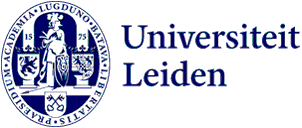Joining forces for a Healthy and Happy The Hague
Numerous of enthusiastic administrators, professionals, policy makers, and citizens gathered last week for an assembly organised by ‘Gezond en Gelukkig Den Haag (in English: Healthy and Happy The Hague). They discussed a different approach to health, health care and society, while exchanging best practices.

Every citizen of The Hague has the right to a healthy and happy life. The Gezond en Gelukkig Den Haag (GGHD) project is actively advocating this right. Which is necessary, because the differences in health and happiness in the various boroughs of the city is substantial. And those differences will only increase, if nothing is done about it.
This network of administrators, policy makers and active professionals shared experiences about the transition from ZZ (ziekte en zorg: illness and care) to GG (gezondheid en gedrag: health and behaviour) and MM (mens en maatschappij: humans and society). Three radars that, when connected in the right way, contribute to a functioning eco-system. In order to achieve this it is, in the words of chairperson Jet Bussemaker - professor at LUMC and FGGA, ‘crucial to get to know each other. That takes time, but it will be profitable in the long run.’
Initiatives were signed
In the end, agreements for four initiatives were officially signed: ‘Preventiecoalitie GGDH’, ‘Scholing Wijkpreventie’, ‘Leer-Kracht preventive in de wijk’, and ‘Opschaling & doorontwikkeling GLI’. By joining forces, these four initiatives aim to contribute to a healthy and happy The Hague.
Healthy and Happy The Hague: scientific research
Within the research group Population Health Governance scientific research is conducted into the GGHD project. This research is part of a larger research track run by the research group in which social dilemmas are connected to health care dilemmas and vice versa. The connection and collaboration between the social domain, public governance, and health care is the central focus of this track. How can we make sure that the different organisations involved are able to connect with each other? And how can we make sure that there policies are in place to facilitate those connections?
